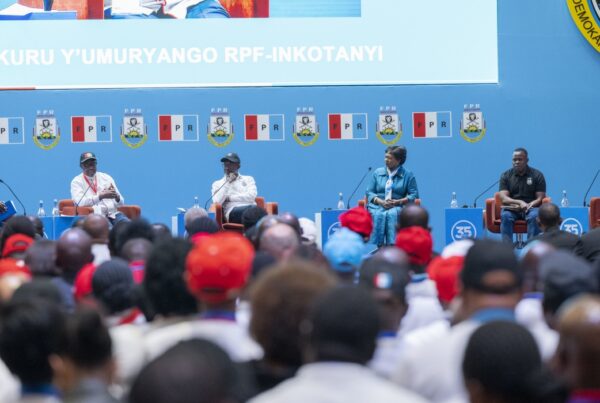Yesterday was 17th Genocide Commemoration Day in Rwanda, the day Rwandans begin a season of sorrow that lasts three months. For the 17th year, they are taking time to remember the culmination of the disembowelment of their family. The genocide against Batutsi was a ‘culmination’, not an “April-July-1994” affair, because it marked the peak of a creeping process that took close to 100 years.
The process started stealthily with the first penetration of a foreigner into Rwanda. When Germans took over Rwanda as part of their German East African colony, they found a strong kingdom that Arabs had not dared enter, in their search for slaves. The kingdom was protected by all Rwandans under the command of a king, in an environment of symbiotic existence.
Rwandans led a life of symbiotic existence in the sense that every Rwandan contributed to the sustenance of a compatriot. Children provided help, women did the home chores and men worked the land, looked after livestock or provided protection. Of course, these were not rigid tasks and anyone could take on any of the tasks, depending on the arrangement of the families.
The same arrangement obtained in different sections of the Rwandan society. Since Rwandans led slightly different lifestyles, they depended on one another for a wholesome existence. One section was heavily dependent on land, another on livestock while another depended on hunting and gathering. With different skills and energies, they complemented one another and strengthened their assets and minimised their deficits.
Bahutu, Batutsi and Batwa were therefore terms that defined the lifestyles of a united people and not labels of different ethnic groups. To a European intending to exercise influence over them, Rwandans presented a formidable force that needed force and tact to rein in. For force, the colonialist had the gun. For tact, he devised the subtle approach of exploiting those differences.
That is how the Germans attempted to portray the different lifestyles as marking different races. That could not be borne out by science, however, and it did not stick. By the time the country was wrested from their clutch, they had not yet devised a plausible tool of division.
The Belgian who took over, noticing that Rwandans shared everything (language, culture, religious rites, etc), decided to ‘carve’ them into ethnic groups. He had noticed that many African countries hosted different tribes that did not share anything. Branding them ‘different ethnic groups’ and favouring one or the other at different times, he was able to put the ‘division-machine’ into motion.
Even then, it took many years of calculated crafting and coercion to break the obstinacy of a people who had managed to stave off all forces of influence this far. From 1916, the Belgian invested all the administrative and church resources into dividing these mountain warriors.
This skewed approach to the management of a society was a ‘revelation’ to the post-independence regimes’ elites and they took it on wholesale. They worked at portraying one section of the Rwandan society as foreigners who should be banished and, later, as foreign pests that should be eradicated. The pogroms against Batutsi of 1959, 1962, 1963, 1967 1973 and 1991 were all “practice genocides” that fed into the “mother genocide” of 1994.
However, all of them were based on an artificial social construct. When the Rwandan Patriotic Front (RPF) came in and showed Rwandans the route back to pre-colonial social cohesion, Rwandans started off hesitantly because they still suffered the ‘colonial/post-colonial hangover’. That hangover still holds many Rwandans in bondage. The victims of this ‘syndrome’ see governance in terms of privileges over their compatriots.
There are those who cannot reconcile with the idea that all Rwandans are one and must enjoy equal rights. Some are sympathisers of the regimes of Kayibanda/Habyarimana who espouse the idea that a Rwandan can only enjoy citizenship privileges if there is another one who is denied. They are in exile in the hope of one day being able to return the ‘division-machine’.
Others are those who joined the RPF liberation struggle with the wrong notion that, on winning the war, RPF fighters and other adherents would go for the spoils. They got to positions of power and used their offices to amass material wealth and to abuse the rights of others.
When they were held to account, they cut and ran into exile, there to shout abuse against their country and their erstwhile colleagues. They are hoping that foreign influence will cleanse their reputation and deliver them back home.
There are many other categories in between. What they all share is a selfish streak of self-aggrandizement at the expense of fellow Rwandans. However, they are a minute number ranged against the powerful tide of 11 million Rwandans. This is the 11-million-strong that today has shed its hesitation and is determined to work together to put the country right in the midst of civilised nations.
These 11 million Rwandans are the authors of the rapid progress that the country is registering by the day. They are solidly united around the cause of their ancestors who saw Rwanda as a world of opportunity for every Rwandan.
As we remember the truth of 1994, let’s celebrate and defend the dignity that we have restored to ourselves.
Twitter: @butamire



